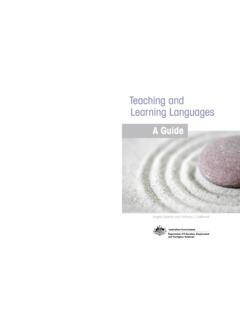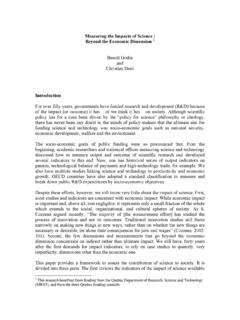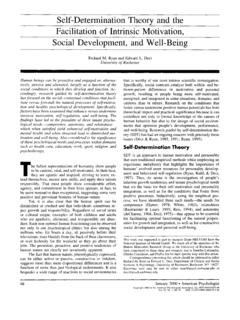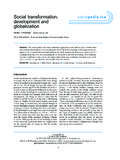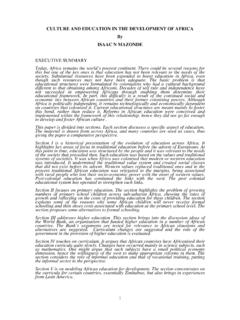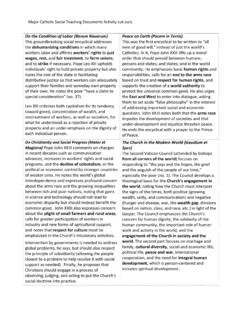Transcription of Language, Culture and Learning - University of …
1 language , Culture and Learning2 language is more than just the code: it also involves social practices of interpreting and making meanings The way we teach language reflects the way we understand language What is learned in the language classroom, and what students can learn, results from the teacher s understandings of language There is a fundamental relationship between language and Culture It is important to consider how language as code and language as social practice are balanced in the curriculumkEy iDEASWhat is language ?What is language ?15 Understanding languageLanguage is at the heart of language teaching and Learning and teachers need to constantly reflect on what language is. This is because our understandings of language affect the ways we teach as codeTraditionally, language is viewed as a code. In this view, language is made up of words and a series of rules that connect words together.
2 If language is only viewed in this way, language Learning just involves Learning vocabulary and the rules for constructing sentences. This understanding of language is, however, a very narrow one. It sees language as fixed and finite and does not explore the complexities involved in using language for as social practiceAn understanding of language as open, dynamic, energetic, constantly evolving and personal (Shohamy, 2007:5) encompasses the rich complexities of communication. This expanded view of language also makes educational experience more engaging for students. language is not a thing to be studied but a way of seeing, understanding and communicating about the world and each language user uses his or her language (s) differently to do this. People use language for purposeful communication and Learning a new language involves Learning how to use words, rules and knowledge about language and its use in order to communicate with speakers of the language .
3 This understanding of language sees a language not simply as a body of knowledge to be learnt but as a social practice in which to participate (Kramsch, 1994). language is something that people do in their daily lives and something they use to express, create and interpret meanings and to establish and maintain social and interpersonal relationships. If language is a social practice of meaning-making and interpretation, then it is not enough for language learners just to know grammar and vocabulary. They also need to know how that language is used to create and represent meanings and how to communicate with others and to engage with the communication of others. This requires the development of awareness of the nature of language and its impact on the world (Svalberg, 2007).Our understanding of language , as languages educators, becomes part of our professional stance and, as such, influences our curriculum, planning and classroom pedagogies.
4 Teachers who view language simply as code make acquiring grammar and vocabulary the primary, if not the only, goal of language Learning . Within such a limited approach, students do not begin to engage with language as a communicative reality but simply as an intellectual exercise or as a work requiring memorising. 16 Teaching and Learning Languages: A GuideThe understanding of language that is part of our stance also affects what happens in the classroom and the ways in which learners begin to understand the relationship between their own languages and the languages of their Learning . If the language Learning program focuses on the code, then it models a theory of language in which the relationship between two languages is simply a matter of code replacement, where the only difference is a difference in words. If the language pedagogies focus on the interpretation and creation of meaning, language is learned as a system of personal engagement with a new world, where learners necessarily engage with diversity at a personal a professional stance that understands language as a social practice, teachers need to ensure that students are provided with opportunities to go beyond what they already know and to learn to engage with unplanned and unpredictable aspects of language .
5 Learning language as a complex, personal communication system involves ongoing investigation of language as a dynamic system and of the way it works to create and convey meanings. This involves learners in analysis and in talking analytically about language . Kramsch (1993:264) notes that: talk about talk is what the classroom does best and yet this potential source of knowledge has not been sufficiently tapped, even in communicatively oriented classrooms . The emphasis on ongoing investigation and analysis assumes that learners are involved in Learning which promotes exploration and discovery rather than only being passive recipients of knowledge as it is transmitted to them by others. These learners require Learning skills which will give them independence as users and analysers of language (Svalberg, 2007).A professional stance that understands language as a social practice requires students to engage in tasks in which they create and interpret meaning, and in which they communicate their own personal meanings and develop personal connections with the new , Culture and LearningLanguage and cultureUnderstanding the nature of the relationship between language and Culture is central to the process of Learning another language .
6 In actual language use, it is not the case that it is only the forms of language that convey meaning. It is language in its cultural context that creates meaning: creating and interpreting meaning is done within a cultural framework. In language Learning classrooms, learners need to engage with the ways in which context affects what is communicated and how. Both the learner s Culture and the Culture in which meaning is created or communicated have an influence on the ways in which possible meanings are understood. This context is not a single Culture as both the target language and Culture and the learner s own language and Culture are simultaneously present and can be simultaneously engaged. Learning to communicate in an additional language involves developing an awareness of the ways in which Culture interrelates with language whenever it is used (Liddicoat, Papademetre, Scarino, & Kohler, 2003).A matter of balanceIn developing a professional stance to language teaching, it is important to consider how language as code and language as social practice are balanced in the curriculum.
7 In developing language capabilities, students need to develop their knowledge and understanding of the code and also to come to see language as a way of communicating between people. Both of these goals need to be present in language teaching and Learning from the for reflection1 Consider the tasks you have used for a particular class or module. What do these tasks show about what you have been emphasising in your own teaching? Do these show a balance between treating language as a code and as a social practice of meaning-making and interpreting?2 How might you develop new tasks for use in the classroom which present a more balanced or more elaborated understanding of language ?18 Teaching and Learning Languages: A GuideThe way in which we understand Culture , just as the way we understand language , affects the way we teach Culture in language Learning . In developing our stance, there are two fundamentally connected issues to consider: what we understand Culture to be how we understand the place of Culture within language Learning .
8 Understanding cultureOne way in which Culture has often been understood is as a body of knowledge that people have about a particular society. This body of knowledge can be seen in various ways: as knowledge about cultural artefacts or works of art; as knowledge about places and institutions; as knowledge about events and symbols; or as knowledge about ways of living. It is also possible to consider this aspect of Culture in terms of information and to teach the Culture as if it were a set of the learnable rules which can be mastered by students. When translated into language teaching and Learning , this knowledge-based view of Culture often takes the form of teaching information about another country, its people, its institutions, and so on. Culture is not, however, simply a body of knowledge but rather a framework in which people live their lives and communicate shared meanings with each other. Culture can be seen as practices or as information Culture plays a central role in the way meanings are interpreted Cultures are characterised by variability and diversity The intercultural is not the same as Culture but is a process which goes beyond the idea of knowing a Culture Culture is fundamentally related to languageWhat is Culture ?
9 KEy iDEAS19 language , Culture and LearningStatic and dynamic approaches to cultureIn thinking about how to teach Culture in the language classroom, it is useful to consider how the ways in which Culture is presented can be categorised. The diagram below (adapted from Liddicoat, 2005) is one way of thinking this through. One dimension is the axis of Culture as facts or as processes: that is, whether Culture is seen as a static body of information about characteristics of a society or as a dynamic system through which a society constructs, represents, enacts and understands itself. The second axis represents the way in which Culture is conceived in terms of educational content. It makes a distinction between artefacts and institutions and practices: that is, whether Culture is seen in terms of the things produced by a society or as the things said and done by members of a society. The most static way to approach the teaching of a Culture typically emphasises artefacts, institutions and factual knowledge.
10 Both the approach to Culture Learning and the content itself are static. The lower left quadrant adopts a static approach to the nature of Learning , but a more dynamic approach to the content, whereas the top right quadrant is static in terms of its content, but dynamic in terms of its approach to Learning (eg as in activities in which learners engaged with cultural artefacts in a hands on way). The most dynamic approach to Culture is represented by the lower right hand quadrant, which sees learners actively engage with the practices of a cultural group. Artefacts and institutionsPracticesFactsProcessesAppro aches to teaching cultureDynamic approach active engagement with practices of a cultural groupStatic approach to Learning Dynamic approach to contentStatic approach to content Dynamic approach to learningStatic approach to cultural Learning and content20 Teaching and Learning Languages: A GuideThe intercultural dimensionKnowledge of cultures is important for facilitating communication with people.
